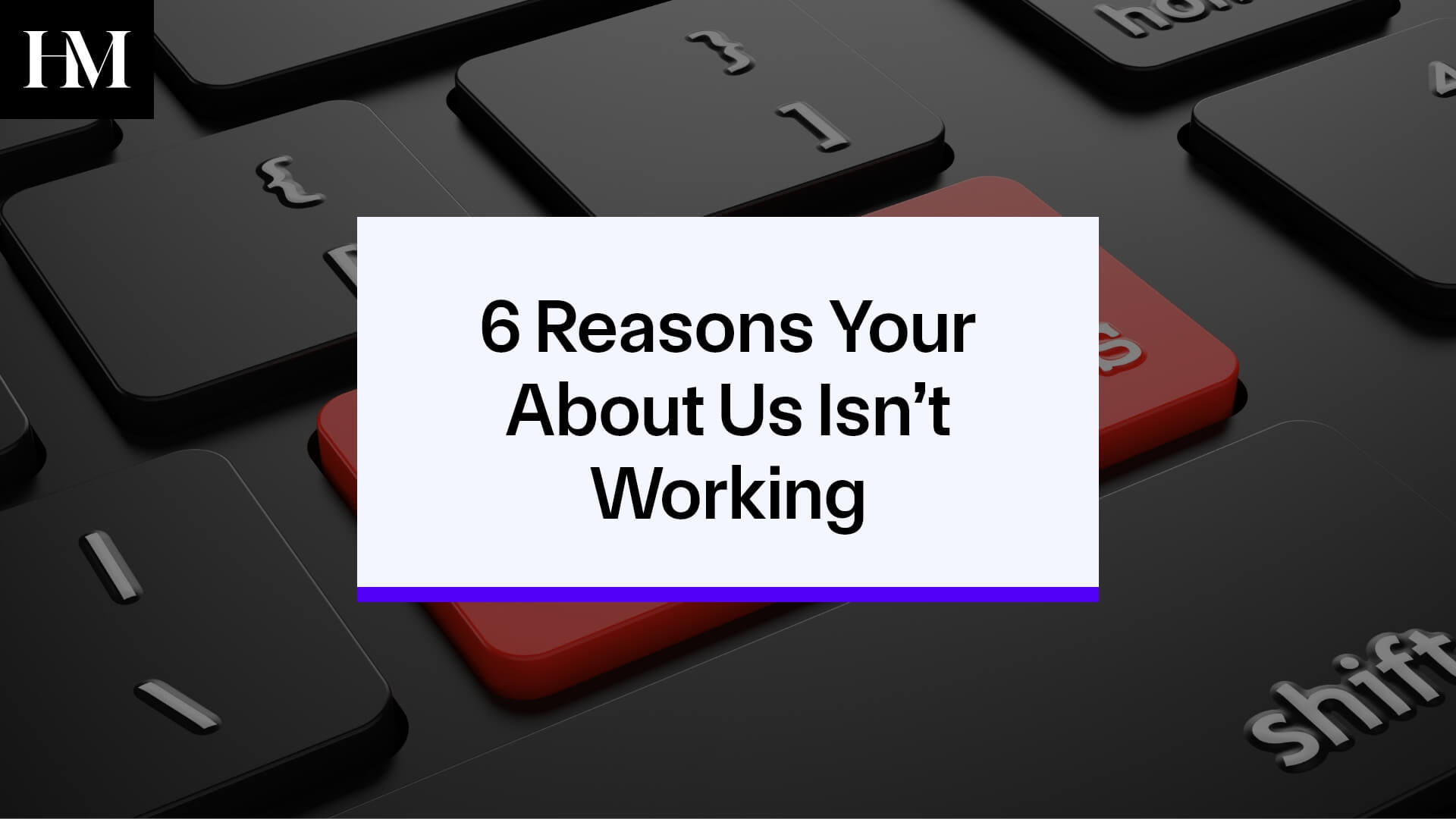This is the final blog post in a seven-part series that unpacks the key questions we encourage brands to ask when evaluating their brand relevancy.
In this article, we address: “Does management have a different understanding of the company values and selling proposition than the rest of the team?”
The About Us Conundrum
Companies all have their mission, vision, and value statements. They’re an important, but often overlooked, part of the brand positioning process.
- Mission: what you are trying to work for today
- Vision: what you hope to work toward tomorrow
- Values: the things you intend to hold dear all along the way
At the end of the day, these are the critical objectives of the business. And they should be understood by every employee, from entry-level hires to long-time executives.
But that’s rarely the case.
Why the Employee Disconnect?
The reasons why are varied: Maybe these statements were written as a part of a brand positioning project by an outside team and quickly relegated to the About Us page of the website, never to be referenced again. Maybe they’re a checkbox in an onboarding exercise that no one takes seriously. Or maybe the organization never made a concerted effort to share these statements beyond the C suite.
In a 2021 article in Harvard Business Review, author Sabina Nawaz suggests five reasons why a disconnect may exist between employees and management:
- Lack of communication—the message must be consistent, repeated, and delivered in a variety of ways
- Different altitudes —if written at a 50,000-foot view, the message must be adapted for all levels of the organization
- Low fidelity—management needs to focus on the commitment, so it trickles down in a clear and concise manner
- Distaste—some may simply not agree with the direction
- Work Avoidance—look for ways to incentivize the adoption and reward initiatives that take work in the right direction
In addition to these 5, we’ve noticed one more big reason these important positioning statements don’t trickle down throughout the company.
Reason number 6: The Message is Irrelevant.
Too many companies know where they want to end up at the end of the story, but not what makes them the main character. If it doesn’t ring true to your employees, it definitely won’t ring true to your customers.
The Missing Statement
HBR complements this topic by suggesting that there is yet another essential mantra the business should have. And that is a Purpose Statement. While the mission statement clarifies who you are as a company and who you serve, the purpose statement answers the why.
Ultimately this takes the company and puts it in the customer’s shoes, seeking to make their means of meeting the bottom line relevant to the customer’s everyday experience.
Here are four examples of purpose statements we love:
- Whole Foods: To nourish people and the planet
- Southwest Airlines: To connect people to what’s important in their lives
- Starbucks: To inspire and nurture the human spirit – one person, one cup, and one neighborhood at a time
- The North Face: To shape the future of human/nature
These statements all have one thing in common – they connect to the customer’s emotional side, and as a result, they are relevant enough for employees and executives to get behind.
Next Steps
Making your company objectives relevant and known to your employees is a branding step that you can’t ignore.
No matter what you call the statement on your About Page. No matter how you educate your employees.
A few questions that might help you measure where you stand:
- Are you 100% sure that everyone is on board with the values and selling proposition at your company—from the C-suite on down?
- Can you verify that agreement through research or anonymous surveys?
- Are your customers truly experiencing the story you’re telling internally?
The answers may hold the key to unlocking brand positioning that everyone can get behind.
Need help digging into these questions? We are experts in helping manufacturers identify what makes their brand most relevant to their customers, and their employees. We’d love to talk.
